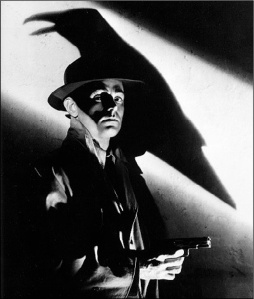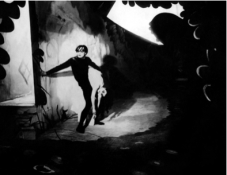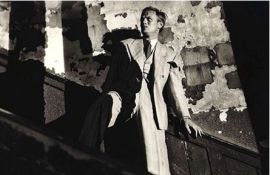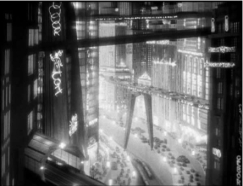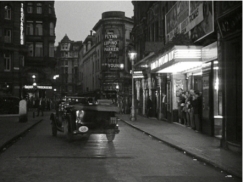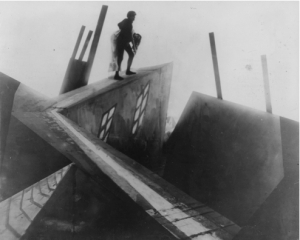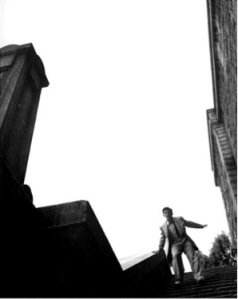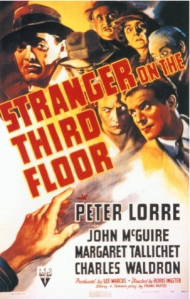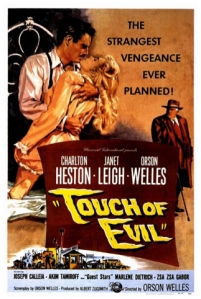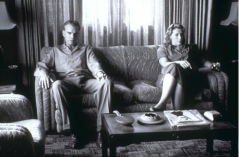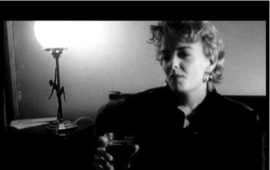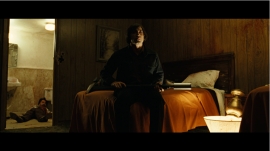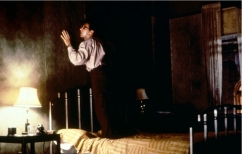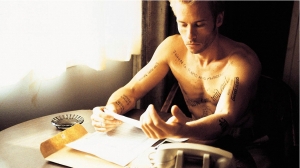A Brief Response to Comments
The Problems With Modern Hollywood and Why Noir is Better
Why is it that some people love Noir’s and others do not? A Film Noir is not universally liked, despite my personal opinion that it should be. This can largely be attributed to American pop culture and the American standard of entertainment. It seems to be becoming the trend in America that intellectual movies with lush stories are being replaced with formulaic Hollywood scripts written off of the words of marketing analysts. The worst part is, filmgoers are supporting this. What are the big blockbusters that are coming out right now? I am currently looking at a list of the top movies at the moment on IMDB.com. We have, The Hunger Games, a film based off of a popular novel; The Three Stooges, a film rehash of the classic slapstick trio; Titanic 3D, another shameless and unnecessary money maker for James Cameron; American Reunion, yet another sequel that will probably be just as bad as the others were; and Wrath of the Titans, a sequel to a film called Clash of the Titans which was a remake of a film with the same title from 1981. Where is the originality? We are in an era of Hollywood film where executives are only greenlighting films that are remakes of old films, sequels, or book adaptations. Not to say that all of these films are bad, cause that would simply be an over generalization. But to be completely honest, many to most of them are bad and do not offer much to film as an “art.”
From: Tooth and Nail
http://toothandnailcomic.com/2012/04/03/tooth-nail-presents-the-michael-bay-press-conference/
I know that there are a large portion of the public who is with me on this and agrees with what I am saying here. And if we let our numbers grow then one day we may force the executives to start letting studios make movies with more substance. It is we who understand what makes a film Noir great. We understand that film is an art form and should be treated as such. And people like you and me are drawn to Noir for that reason. It is composed beautifully and the nuances of each composition was specifically designed to evoke an emotional reaction. Take this photo from Gun Crazy for example.
Our main character is about his first robbery as an adult. The composition is dark and full of shadows, using hard lighting in the noir fashion. But there is much more to this composition that you would be able to see if you have watched this movie. At the beginning of the movie we see our main character as a young boy with a fascination for guns. He ventures to his local hardware store in the pouring rain where he breaks the window to grab an ornate revolver on display. Now in the scene above what do you see in the background of his first robbery? It just so happens to be a hardware store. Coincidence? I think not. It is this attention to detail that makes a film truly artistic. This composition speaks more than what it may first appear.
Film is an art medium and modern Hollywood is treating it as a selfish moneymaker. We love Noir’s because they are artistic, because the creators felt something when they made this movie! There are so few movies that are made this way nowadays. Wes till have Spielberg who takes great joy and love with his job, and we have people like Christopher Nolan who is breaking barriers by making blockbuster hits that don’t fit into the Hollywood mode of formulaic scripts, and we have filmmakers like the Coen Brothers who are incredibly original and creative with every movie they put their minds to. So all is not lost, but we need to support filmmakers like these and not support the Hollywood drones.
Everyone Should Like A Good Noir
From my blog you have already learned a few things about Noir and why I enjoy it so much. But some of you out there may still not understand why I like it or why I think that you should like it. So I’m going to explain it to you as best I can, because let’s be honest here, you all deserve to love Film Noir’s as much as I do… They are great! Seriously great.
I understand that there are a lot of people who just have a distinct problem with watching old black and white movies. They are simply labeled in your mind as taboo and boring. And in some cases this is true, some old films are boring, but not anymore than we have boring films that come out today. So dispel that notion if only for a short time and give a true film noir a try. There is something about film noir and black and white film that just come together to make some of the most strikingly beautiful images you will ever see on the silver screen.
Many of you have probably seen a film noir and not even realized that that is what it was. Let me ask you this, who is one of the most renowned and still recognized filmmakers in American history? Have you ever heard of the movie Psycho? Or maybe the classic movie Notorious? Or even Vertigo? Yes, I am talking about Alfred Hitchcock, the great master of noir. And yes many of his films do fit into the genre of film noir. And most people I believe have seen at least one of his films. He is a piece of American culture, and if you haven’t seen one of his films, you most definitely should get your hands on one of his movies and watch it!
Then we come of course to the debate on the best movie of all time. What are the two most common contenders in this battle? Orson Welles’ Citizen Kane, and Michael Curtiz’s Casablanca. Now people, what do these two films have in common? They are both FILM NOIRS! The cold stark reality of film noir’s has a draw to audiences which is almost inexplicable, but it is obviously there, and they are loved worldwide.
Don’t think that noir’s no longer hold a place in society today because they do. The offspring of film noir’s, the neo-noir is just as prevalent as its classical form. I’m going to list all of the film’s from the last five years that have a heavy noir influence that have been nominated for the Academy Award for Best Picture: Winter’s Bone, True Grit, and Black Swan (2010). A Serious Man (2009). No Country for Old Men (Won), and There Will Be Blood (2007).
I hope that you are starting to see the trend here. Even though many people don’t know what film noir is, most people have seen them and love them. Film noir is an important part of film culture, a big part of American society. Anyone reading this will have most likely seen one of the many films mentioned in this post. Now that you know that it is not just a movie, but a piece of a much bigger genre of film, I hope that you will learn to respect and love film noir’s as much as I do. They have continually been my inspiration in my own work, and even if you aren’t a filmmaker I think that they can still inspire you.

A Brief History of Film Noir
Film Noir is a term not easily described. Is it a style? Is it a genre? What exactly is it? You can find numerous definitions of it around the web and none of them are inherently wrong nor inherently right. On Wikipedia.com the Film Noir article defines it simply as, “a cinematic term used primarily to describe stylish Hollywood crime dramas, particularly those that emphasize cynical attitudes and sexual motivations.”
On Dictionary.com Film Noir is defined as, “a motion picture with an often grim urban setting, photographed in somber tones and permeated by a feeling of disillusionment, pessimism, and despair.”
Both of these bring up important elements of the style and capture the essence of what a noir entails. We could spend pages and pages discussing how to define this class of film and the elements that make it up, but for this post we will simply be going through a brief history of this film movement and what it has done for film today.
What we consider to be classic film noir’s were made primarily in the 40’s and 50’s. The term “film-noir” was coined by French critic Nino Frank, hence the french term “film-noir” which means black film.
At the time these movies were being made in Hollywood, they did not refer to these movies as noir’s, but as melodramas.
It was at a later time that these films came to be known as a collective group that could be defined as a film noir.
But where does this genre stem from? The dark compositions and use of lighting and shadow that permeates the style of a noir was heavily influenced by a film movement known as German Expressionism. There are definitely many similar elements between the two styles. There is a huge emphasis on shadows and shapes that reinforce a psychological state of a character.
The Cabinet of Dr. Caligari Night and the City
The Cabinet of Dr. Caligari Force of Evil
In the above pictures, the left column are examples of German Expressionist films, whereas the right side are examples of Film Noir’s. Looking at each picture next to each other you can easily see the similarities in style. In the top row, you can see that the use of shadows, and even the body language of the characters, are composed very similarly. In the second row, you can see similar styles in the way the outside world is portrayed. It is dark and full of shadow and uncertainty. The gothic city is common in both styles of film. In the bottom row you can see the main characters of the films against white with contrasting dark buildings with sharp angles that represent the uncertainty of the world they live in.
Film Noir had such great directors as Orson Welles, Jules Dassin, Fritz Lang and even Alfred Hitchcock to pave the way for this genre. Fritz Lang, a German director, who clearly took his inspiration from German Expressionism, is considered the most important director associated with the style of noir filmmaking. His film “M” from 1931 is often used as an example of the archetypal noir.
To see a video that demonstrates this just click here.
It is hard to say what the first film noir was for sure. According to filmnoirstudies.com’s timeline, Stranger on the Third Floor, directed by Boris Ingster in 1940 was the earliest film to be classified as a noir. And in 1958, Orson Welles’ wonderful film noir Touch of Evil marked the end of what is considered the era of “Classical Film Noir.”
Although the era of classical noir’s has ended, there is still more to its history. Out of this film noir movement has come what is now known as neo-noir, which simply takes prominent elements of the noir genre and applies them to modern films. The biggest difference is that films are now in color rather than black and white, which gives modern noir’s a different aesthetic feel. Another difference comes from the fact that the classic noir’s came out in the era of the code, a time where censorship rules limited what you could show in a film. So the way sex and violence was portrayed had to be done in different ways whereas modern films often have explicit acts of sexuality and violence sometimes going into the extreme of ultra-violence as is the case with such neo-noir’s as Drive and The Long Goodbye.
Noir is still a very important piece of modern cinema. Neo-noir’s are being made by well acclaimed directors like the Coen Brothers (Ethan & Joel Coen), with the Academy Award winning movie No Country For Old Men, and other films such as Blood Simple, Barton Fink, Fargo, and even their black and white film The Man Who Wasn’t There (clearly following the noir genre archetype). And Christopher Nolan’s Memento and his black and white film Following are more prime examples of the neo-noir movement that helped propel him into working on such films as The Dark Knight (stylistically similar to noir’s) and Inception.
The Man Who Wasn’t There Following
No Country For Old Men Barton Fink
Film Noir is a genre that will continue to fascinate and entertain for a long time to come. It is the style of film that most inspires me and my work as a filmmaker and I look forward to seeing where it will go in the future. I have just given you a very brief history of Film Noir but the history does not stop here where I leave off because the genre will continue to flourish and grow throughout the years continuously putting audiences into shock and awe.



